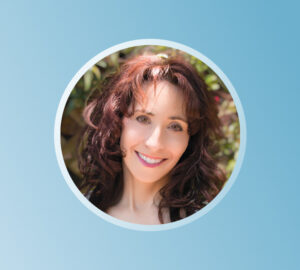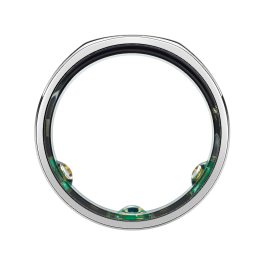Whenever you want to improve an area of your health, you probably focus on one (or more) of the usual suspects — diet, exercise, or sleep. While these three pillars play a pivotal role in your general wellness, there’s one surprising element in your daily life you may not immediately consider: light.
As Matt Maruca can attest, getting the right kind of light at the right times (and avoiding the wrong kinds) is a science-backed way to benefit your overall well-being, from your sleep to your all-day energy levels, As the founder and CEO of Ra Optics, a company that develops advanced light therapy-based products, Matt is passionate about, well, shedding more light on this essential, yet often overlooked, component of health.
Keep reading to learn more about Matt’s journey, as well as simple ways to upgrade your interactions with light in your daily life.
Tell us about your background.
As a kid, I struggled with poor health: gut issues, allergies, headaches, and chronic fatigue Every day, I woke up feeling exhausted. At school, I constantly wanted to fall asleep. I felt depressed and unhappy. By age 13 I was trying ultra-strict diets and every healing supplement you could imagine. Changing my diet helped — but only partially. My health went from, let’s say, a one, to a two or three. But I wanted to be at a 10.
Then, I learned about mitochondria, the engines in our cells that burn our food for energy (just like a car engine burns gasoline to run). It turned out that these mitochondria are controlled by light. In order to function properly, mitochondria need sunlight during the day and, to repair, they need darkness at night.
To continue the car analogy: If the spark plugs in a car’s engine are broken, premium gasoline and fuel additives alone can’t fix it. The car needs to see a mechanic! In the same way, if our mitochondria aren’t working properly, no amount of healthy food or supplements will be able to fix them—this was my challenge exactly! We have to get our engines to their natural mechanic: sunlight during the day, and darkness at night.
How did you begin to harness the power of light for better health?
I started going out in the sun in the morning to help set my body’s natural rhythm and energize my mitochondria — basically, getting my body’s rhythm back on track with nature.
But, avoiding light at night? This seemed impossible. Then I learned that a very specific part of the light spectrum, high-energy blue light, affects the body’s circadian rhythm far more than any of the other colors.
Read more about how blue light impacts your sleep.
So I found goggles on Amazon that blocked all of the wavelengths of light that disrupt the circadian rhythm. I noticed the effects immediately. I felt naturally more calm and relaxed in the evening, slept more deeply, and woke up with more energy. My health issues began to fade further and further away.
How did you come up with the idea to found Ra Optics?
There was just one problem: I was in high school, and wearing red goggles was really not cool at the time. I tried several brands but not a single one both blocked the right wavelengths of light and had attractive, top-quality frame styles to choose from.
So, I did research and started making and testing them for myself, my family and friends, and others. When things started to pick up, I needed a name for my new brand! I remembered learning about Ra, the Egyptian god of sunlight. The sun god was the most powerful of all the ancient gods in every society, because the sun was the most powerful and relevant force for life on earth, and still is today. So, I decided to name my new endeavor “Ra Optics” — a tribute to the sun; a nod to the ancient wisdom that is the foundation for all modern knowledge.
You’re also an Oura member — can you share any interesting insights you’ve gathered from wearing the ring?
One of the things that surprised me was that my REM sleep was lower than it should be. I believe it had to do with working too much and keeping my mind overactive. On days when I make more time to relax, I see an increase in my REM sleep. I also get a lot of deep sleep, which I’m sure my body really needs. I love that Oura can help to quantify all of this amazing information!
Another thing I really love about the ring is that it is so beautiful. I wear the gold Oura Ring Gen3 on my left pinky and it just looks so great.
Matt’s 5 Tips to Tap Into the Benefits of Light
1. Watch the sun rise and set. Go outside and watch the sun rising or setting for at least 10 to 15 minutes, every day — and skip the sunglasses, Matt recommends. (Going outdoors also ensures you’re absorbing the healing infrared light, which can be filtered out by windows.) Bonus: Walk barefoot on the earth to experience the healing benefits of grounding, or earthing, as you take in the sunlight.
2. Get sunlight throughout your day. Aim to go outdoors at least once every 1 to 2 hours for 5 to 10 minutes. Bonus: The more frequently you head outdoors, the more you reduce inactivity, which is helpful for your overall health. Being more active throughout the day is also something the Oura App tracks as a beneficial contributor to your Activity and Readiness Scores.
3. Switch up your mealtime. Some emerging research suggests that shifting our meals to better align with our circadian rhythms can deliver health benefits. (Check out the work of Dr. Satchin Panda, a professor at the Salk Institute, to learn more, Matt suggests.) To get in sync with the 24-hour circadian cycle, Matt recommends a medium-sized breakfast, lunch as your heaviest meal between 11am and 1pm, and a lighter dinner, ideally before 5pm in winter and 6pm in summer.
4. Go to sleep earlier. Aim to begin winding down with sunset and go to sleep within 2 to 3 hours of sunset, and/or before 10pm at least 5 nights per week.
5. Block harmful lightwaves. During the day, consider wearing protective eyewear, such as Ra Optics Daylight Lenses, whenever you’re indoors under fluorescent or LED lights, like in the office or at school, especially if for extended periods of time. After the sun goes down, “the best eye covering would be a blindfold,” Matt says — only a bit impractical! Another option: Switch to red-tinted blue-light-blocking glasses, such as Ra Optics Sunset Lenses, while you’re exposed to man-made light sources until you go to sleep. Acceptable forms of light after sunset include warm, red-hued light, dim lighting, and candle or fire light, Matt notes.
Follow Ra Optics and Matt Maruca on Instagram.





